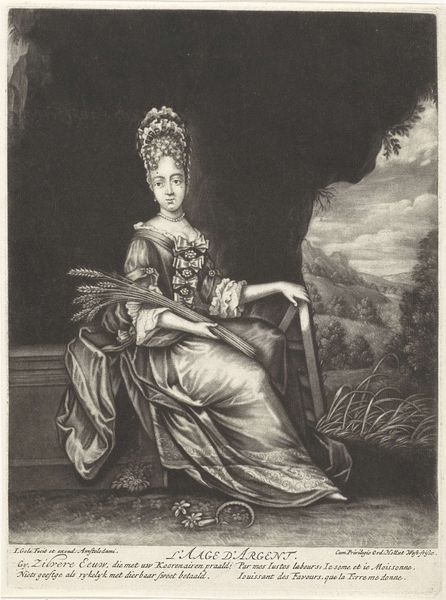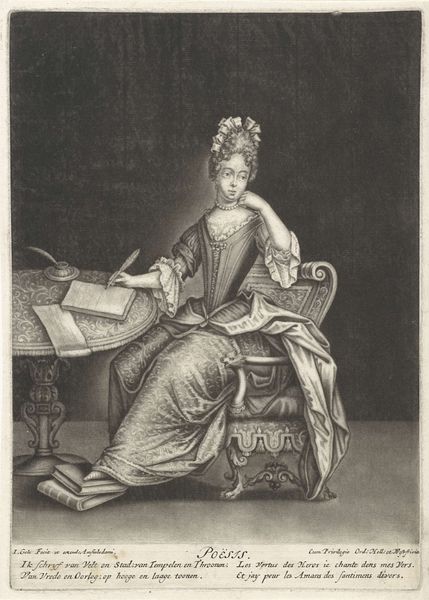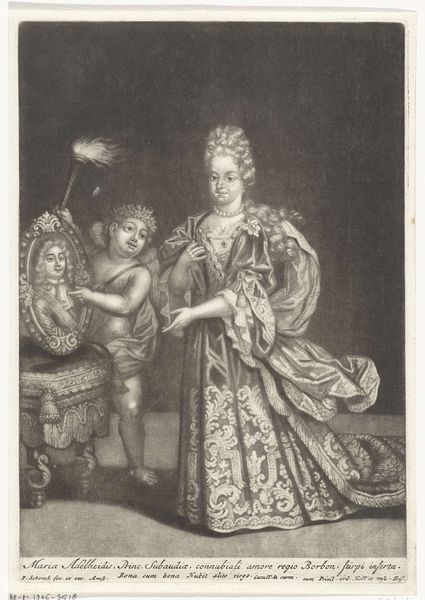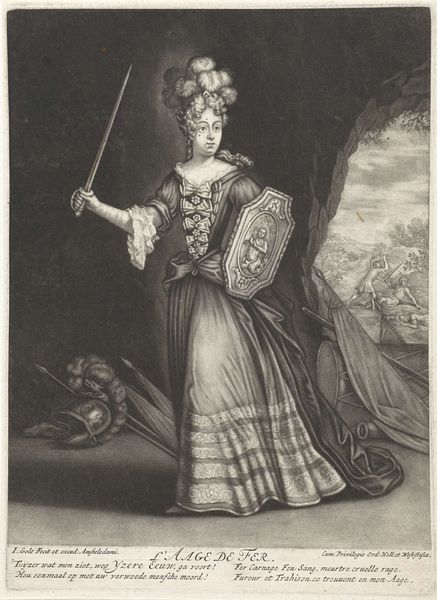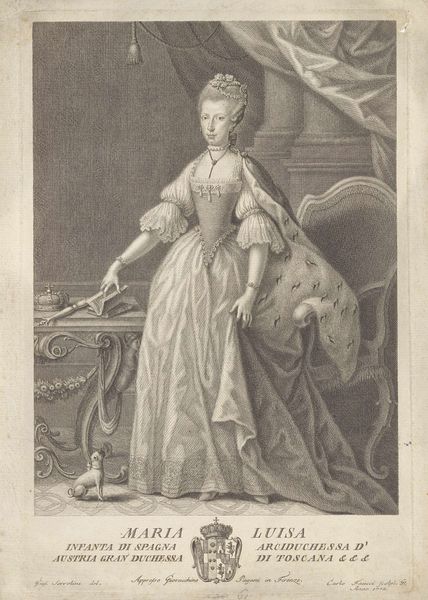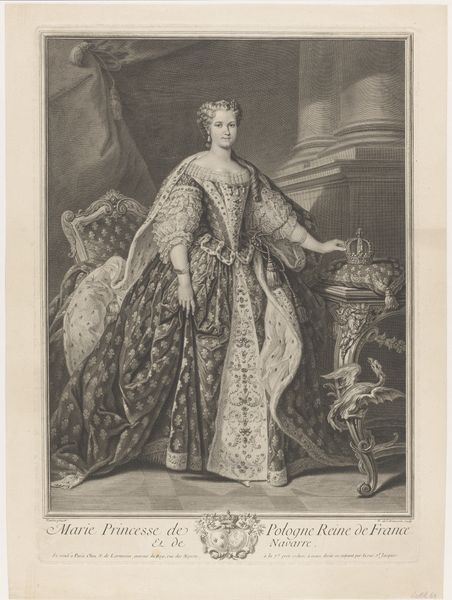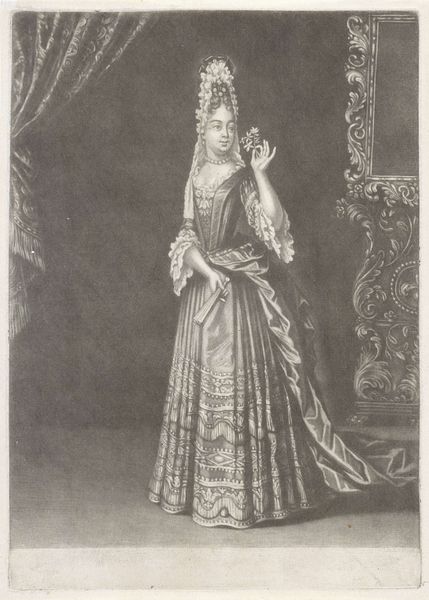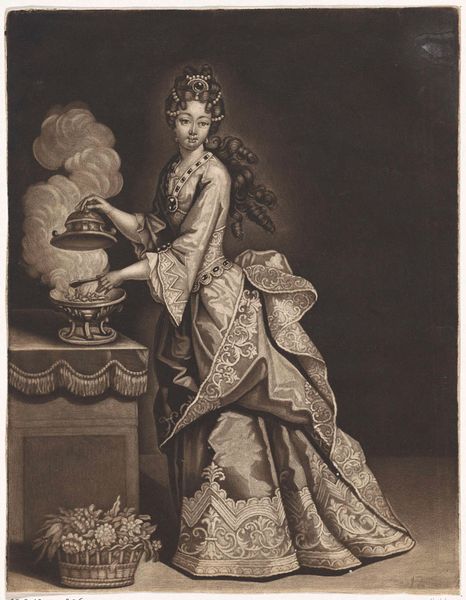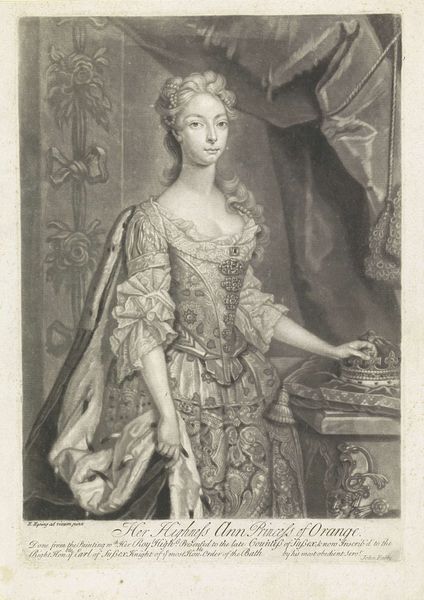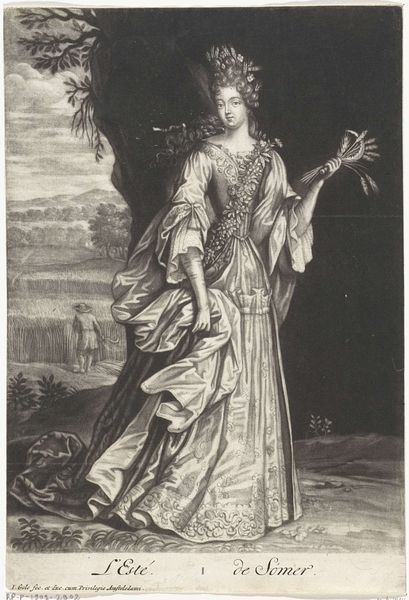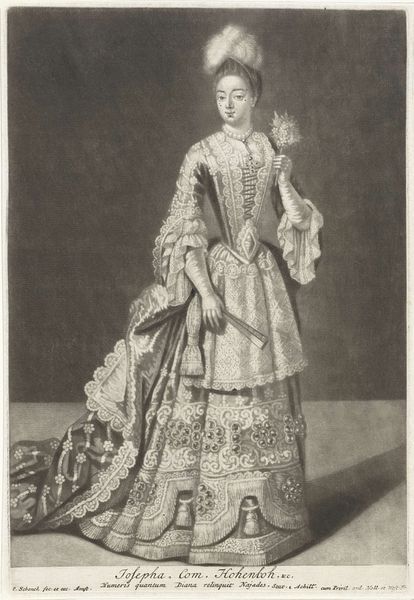
print, engraving
#
portrait
#
baroque
#
dutch-golden-age
# print
#
figuration
#
line
#
portrait drawing
#
history-painting
#
engraving
Dimensions: height 249 mm, width 185 mm
Copyright: Rijks Museum: Open Domain
Editor: So, here we have Pieter Schenk’s "Azië," an engraving from around 1670-1713. It strikes me how this piece, though static, is overflowing with elements of trade and the exotic, almost like a material inventory. What do you see in this piece, especially concerning the methods and meaning in its production? Curator: It's a fascinating demonstration of how the Dutch Golden Age processed and commodified the 'exotic East.' Notice the very specific technique of engraving; each line meticulously carved to replicate textures of fabrics, the plume, even the smoke rising from the incense burner. This level of detail speaks volumes about the intended consumer - someone who valued luxury goods and wanted tangible proof of their worldly possessions, represented here through meticulously rendered materiality. Editor: So the *process* of engraving itself connects to the commercial aspect? How does the artist negotiate his cultural distance from the subject, 'Asia'? Curator: Absolutely. The printmaking process allowed for mass production and circulation of these images, fueling a consumer desire for the 'Orient' without truly understanding it. Schenk likely never even set foot in Asia. He is working from second-hand knowledge, essentially *producing* an imagined Asia for European consumption. How is the material hierarchy displayed? Is the camel as prized a commodity as the dress? Editor: I see...The luxuriousness of the clothing and the incense burning does seem prioritized. So, in this context, is it fair to view this image less as a portrait, and more as a carefully constructed advertisement for global trade and a burgeoning consumer culture? Curator: Precisely. The material conditions of the work's creation and circulation shaped its very meaning. Understanding the historical trade routes, the availability of materials for printing, and the social function of prints helps us unpack what "Azië" truly represents. The material reality of trade overwhelms any personal connection, wouldn't you agree? Editor: I agree! I hadn’t thought about it that way, viewing the engraving itself as a product deeply intertwined with the material desires of the time. Curator: Exactly. It reveals the complex relationship between art, material culture, and social context.
Comments
No comments
Be the first to comment and join the conversation on the ultimate creative platform.
